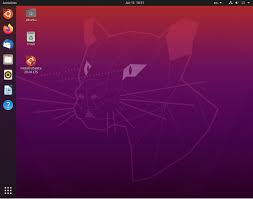Unlocking Potential: The Influence of Open Source Software Tools
The Power of Open Source Software Tools
Open source software tools have revolutionised the way we work, collaborate, and innovate in the digital age. These tools, developed and maintained by a global community of passionate individuals and organisations, offer numerous benefits that have transformed the landscape of technology.
Collaboration and Innovation
One of the key strengths of open source software tools is the spirit of collaboration they foster. Developers from around the world can contribute to projects, share ideas, and collectively improve the quality and functionality of the tools. This collaborative approach often leads to rapid innovation and the development of cutting-edge solutions.
Customisation and Flexibility
Open source software tools provide users with a high degree of customisation and flexibility. Since the source code is freely available, developers can modify the tools to suit their specific needs or integrate them with other software seamlessly. This level of adaptability allows for greater efficiency and productivity in various tasks.
Cost-Effectiveness
Another significant advantage of open source software tools is their cost-effectiveness. Most open source tools are available for free or at a significantly lower cost compared to proprietary alternatives. This accessibility makes them ideal for individuals, small businesses, educational institutions, and non-profit organisations looking to leverage powerful software without breaking the bank.
Transparency and Security
Transparency is a core principle of open source software development. The availability of source code allows users to inspect how a tool functions, identify any potential vulnerabilities or bugs, and contribute to its improvement. This transparency not only enhances security but also builds trust among users who value data privacy and integrity.
Community Support
The vibrant community surrounding open source software tools provides invaluable support to users at all levels. Forums, documentation resources, online tutorials, and user groups enable individuals to seek assistance, share knowledge, and collaborate with like-minded enthusiasts. This strong sense of community fosters learning opportunities and encourages continuous growth.
In Conclusion
Open source software tools have become indispensable assets in today’s digital landscape due to their collaborative nature, customisation options, cost-effectiveness, security features, and robust community support. By embracing these tools, individuals and organisations can harness their power to drive innovation, streamline workflows, and achieve greater success in their endeavours.
Frequently Asked Questions About Open Source Software Tools
- What is the open source tools?
- Are all open source tools free?
- Which application software is open source?
- What are examples of open-source software?
What is the open source tools?
Open source tools refer to software applications or programs that are developed and distributed with their source code openly available for users to view, modify, and redistribute. Unlike proprietary software, which restricts access to the underlying code, open source tools encourage collaboration and innovation by allowing developers worldwide to contribute improvements and customisations. This transparent approach not only promotes community-driven development but also enhances flexibility, security, and cost-effectiveness for users seeking powerful solutions in various domains.
Are all open source tools free?
The question of whether all open source tools are free is a common query among users exploring open source software. While the majority of open source tools are indeed available for free, it is essential to understand that the term “open source” refers to the accessibility of the source code and not necessarily the absence of cost. Some open source tools may have licensing fees or offer premium versions with additional features or support. However, the fundamental principle of open source software is that users have the freedom to view, modify, and distribute the code, promoting transparency and collaboration within the community.
Which application software is open source?
When users inquire about which application software is open source, they are seeking information on a wide range of software applications that are developed and distributed under open source licences. Open source application software includes popular tools such as LibreOffice, GIMP, VLC Media Player, Mozilla Firefox, and Audacity, among many others. These applications offer users the freedom to use, modify, and distribute the software according to the terms of the respective open source licences. Embracing open source application software not only provides access to powerful tools but also promotes collaboration, innovation, and transparency within the digital ecosystem.
What are examples of open-source software?
When exploring the realm of open-source software, one frequently asked question is, “What are examples of open-source software?” There is a vast array of open-source tools available across various categories, catering to different needs and preferences. Some popular examples include the Linux operating system, the LibreOffice productivity suite, the Mozilla Firefox web browser, the Apache web server, and the VLC media player. These are just a few illustrations of the diverse range of high-quality open-source software that empowers users with free access to innovative solutions developed by a collaborative community.




